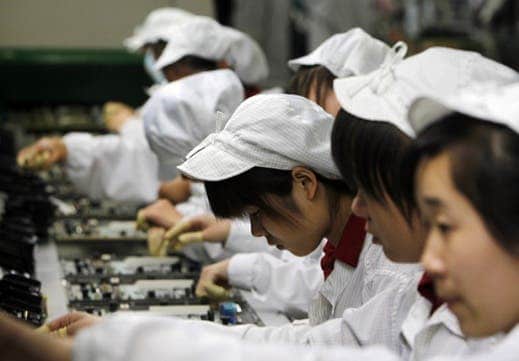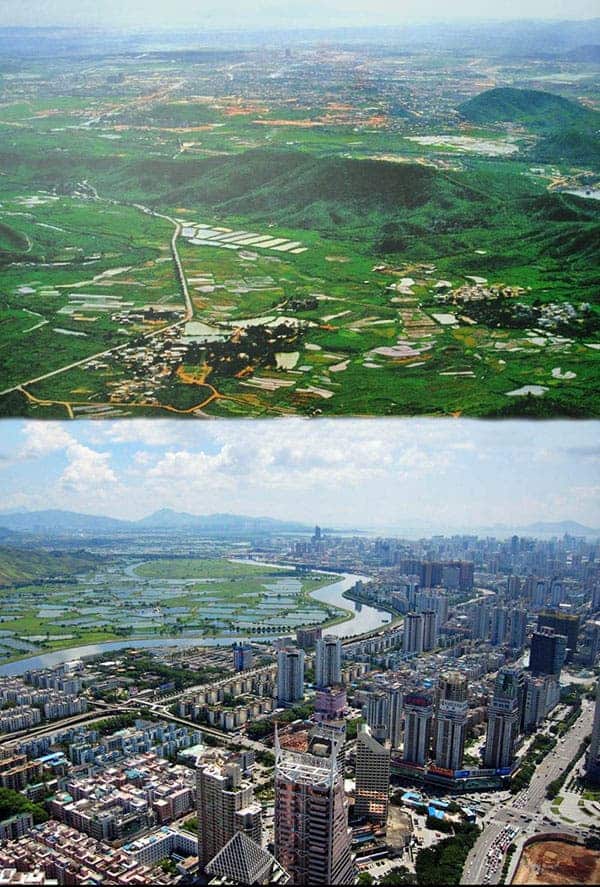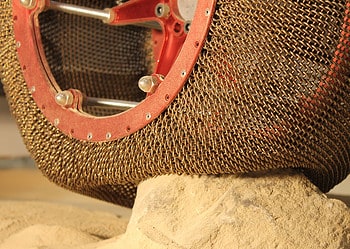The Guangdong Province, particularly the area surrounding Shenzhen, is known as the “world’s workshop”, for obvious reasons. This is where most of the world’s consumer goods and electronics are manufactured, employing millions. It all started when Deng Xiao Ping transformed Shenzhen, a small fishing village in 1979, into a reduced tax area, which made foreign investors flock attracted by the cheap labour. To this day, in Shenzhen you don’t have to pay VAT at export, contrary to Shanghai.

Fast forward and Shenzhen has become the world’s capitol for manufactured electronics, while the province of Guangdong makes everything else in the world. It’s as if the whole province is one mega factory, supplying the world with everything it needs. Only 30 years ago it used to be a fishing village. Now it’s home 15 million people and bustling megalopolis. If you ever visit the Huaqiangbei electronics markets of Shenzhen you’ll be amazed because every booth on all 10 floors represents a factory somewhere in southern China’s Pearl River delta.

For a foreigner, it’s easy to roam the busy streets of Shenzhen’s business district and lose track of the fact that this whole empire was built on the backs of one of the cheapest labor force in the world. But that’s changing. The medium wage in Shenzhen has risen a couple fold in the last few years alone. The International Labor Organization says an average worker’s monthly wage is the equivalent of 911 yuan in Vietnam and 603 yuan in Cambodia, for example, but 3,483 yuan in China. People have more opportunities now, too. If they get sacked from their manufacturing job, they can always cross the street to the other plant.
“In the 1990s, if you hung a job advertisement out on the street, hundreds of people would swarm for jobs. Ten years ago, if you put up a sign, some would still come, but not as many,” says Kevin Chang, general manager of Concord Ceramics. “Five years ago, if you hung a sign, almost no one would come. Today you have to proactively look for people.”
It’s not all about opportunities either. The demographics and social life in China, especially in Shenzhen, are changing.
“Workers born in the 1970s typically had limited education; they grew up when China was still backward and had little exposure to the outside world. Workers born in the 1980s have more technical expertise and depend heavily on working in a particular industry,” says John Liu is the 31-year-old founder and owner of Harderson International, a small factory in southern China that applies paint and decals to ceramics and glass. “Those born in the 1990s don’t even want to work. Even many with college degrees don’t know what they want. Single children are pampered, and they often stay home in their parents’ homes. They make very unstable workers.”
You know what makes really stable workers? Robots. The business owners have, of course, known this for a long time. What they’ve been waiting for is for robots getting cheap – and they have.
Midea, a major appliance maker, is in the forefront of a full-blown charge by China’s manufacturing sector into robot-powered factory automation. They first started automating in 2011, and the transformation is continuing today. Its residential air conditioner division, for example, plans to cut 6,000 of its 30,000 workers by the end of 2015, and another 4,000 by 2018.
Foxconn on the other hand is even more ambitious. Growing tired of the constant hassle it has to put up with (yesh… human workers), the company announced it will replace 1 million human workers with robots.
“The use of automation is driven by Foxconn’s desire to move workers from more routine tasks to more value-added positions in manufacturing such as R&D, innovation and other areas that are equally important to the success of our operations.”
That would sound noble, if it wasn’t full of bull. The decision is entirely driven by profit. But it’s China own fault, too. Can you blame Foxconn or the gazillion other plants in China for wanting to replace their workers with robots if they have the chance? After all, they’ve been treating humans are robots all along. It’s just an upgrade. The latest Shenzhen company to make headlines with a new automated like is Evenwin Precision Technology, an electronics processing company which sacked 90% of its employees, replaced them with robots and saw productivity soar. Previously, there were 650 employees at the factory, now there are 60 – mostly engineers and accountants that oversee the production lines – and the number should go down to 20, according to company officials. The robots have produced almost three times as many pieces as were produced before. Quality has also improved. The product defect rate was 25%, now it is below 5%.
The International Federation of Robotics (IFR), which represents robot manufacturers and research institutes, said China last year surpassed Japan to become the world’s biggest market for industrial robots. Some 200,000 were operating in China at the end of 2014, the IFR said, with 32,000 installed in 2013 alone, accounting for 20 percent of worldwide installations that year. The robot-to-worker ratio in the country is still relatively low, the IFR said, with 30 robots working in manufacturing plants per 10,000 employees. Japan’s ratio is 11 times higher.






